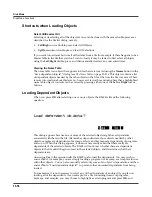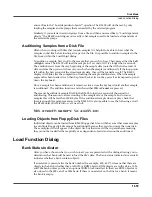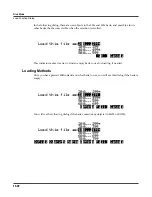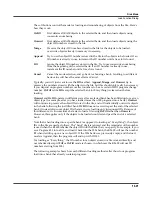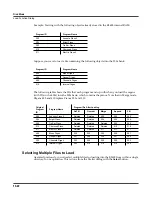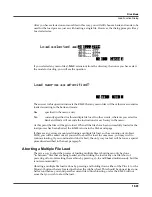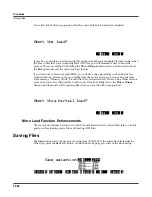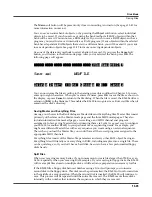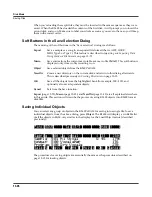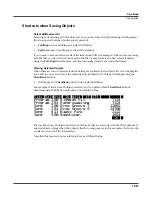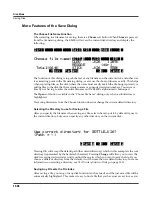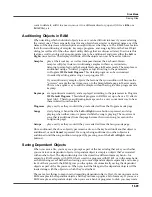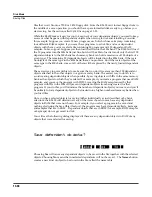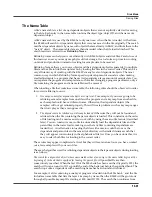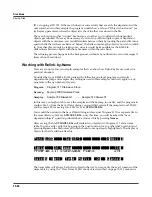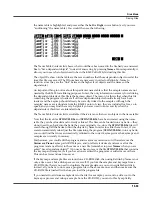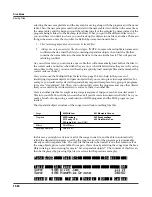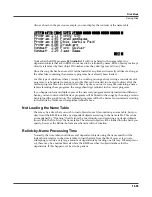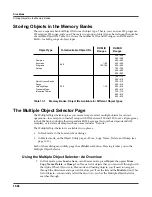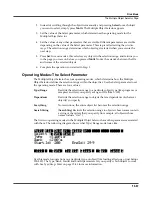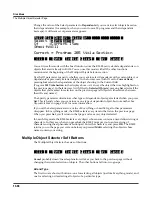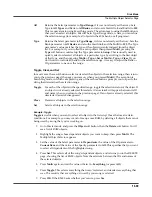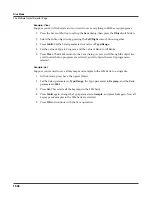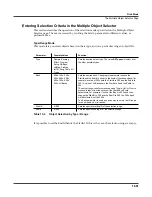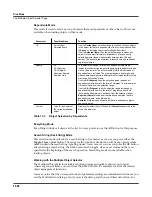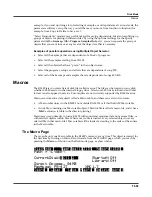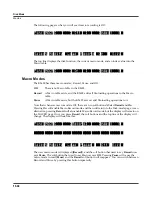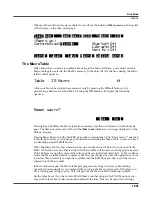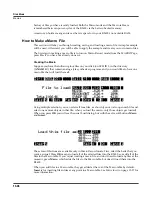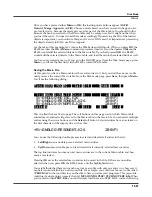
13-32
Disk Mode
Saving Files
ID 1, stopping at ID 399. If the search does not successfully Þnd a match, the dependent will be
unresolved, and in this example the program would show a value of ÒObject id not foundÓ for
its Keymap parameter, where the object id is the value that was stored in the Þle.
The search is done in this ÒcircularÓ manner so as to allow you to direct which dependent
objects get relinked. This may be necessary if you end up with multiple copies of dependent
objects with the same name; you can differentiate between them by loading the parent Þle into a
speciÞc bank that is the same bank or ÒbeforeÓ the bank containing the objects you wish to relink
to. Note that this can only be taken so far, since it would be impossible for the K2600 to
differentiate between objects with the same name within the
same
bank.
The relinking process happens in the background, without any notiÞcation or error messages if
items cannot be relinked.
Working with Relink-by-Name
Here are a couple of more in-depth examples that can show how Relink-by-Name works in a
practical situation.
Consider that your K2600Õs RAM contains the following one-layer program and also its
dependent keymap and samples (the technique used in this example could well apply to any
programs with any number of layers):
Program
:
Program 317 Steinwave Piano
Keymap
:
Keymap 300 Steinwave Piano
Samples
:
Sample 300 StwaveG1 .......... Sample 310 StwaveC7
In this case you might wish to save the samples and the keymap in one Þle, and the program in
another Þle. So, from the Save Object dialog you could Þrst select all the samples from 300-310,
and Keymap 300, for saving into a Þle, letÕs say
STWAVE1.K26
.
You would then return to the Save Object dialog and save just Program 317 in a separate Þle in
the same directory, letÕs say
STWAVE2.K26
Éonly this time, you will be asked the ÒSave
dependent objectsÓ question pictured above. Answer this by pressing
Names
.
After saving, the Þle
STWAVE2.K26
will contain two objects in it, Program 317 and a name
table. You can easily verify this by going to the Load function (or any other disk function) and
pressing
Open
on the Þle just saved (which should come up already highlighted). The display of
objects for the Þle will look like this:
Func:LOAD|||||Sel:0/2|||||||||||Index:|1
||||||||||||||||||||||||||||||||||||||||
||||||||||||||||||||||||||||||||||||||||
Table||||36|Names|||||||||||||||||||334|
Program|317|Steinwave|Piano|||||||||274|
||||||||||||||||||||||||||||||||||||||||
||||||
|
||||||
|
|||||
|
||||||
|
|||||
|
|||||||
Select
|
|Next|
|
Type|
|
Multi|
|
|OK||
|
Cancel|
The name table will always be the Þrst object in the list. You can verify the exact contents of the
name table by using the ÒView Name TableÓ shortcut (as described on page 13-18); make sure
Summary of Contents for K2600 BEST OF VAST - REV A
Page 76: ......

